Milan Material Discoveries 2023: Part 2
While materials have always played a central role in the process of designing and constructing our built environments, their significance has perhaps never been so underscored than what we have witnessed over the past decade or so. Independent material libraries and material-focused exhibitions nestled among the many furniture offerings at international trade shows are a testament to this, and indeed the Milan Furniture Fair was no exception earlier in the Spring.
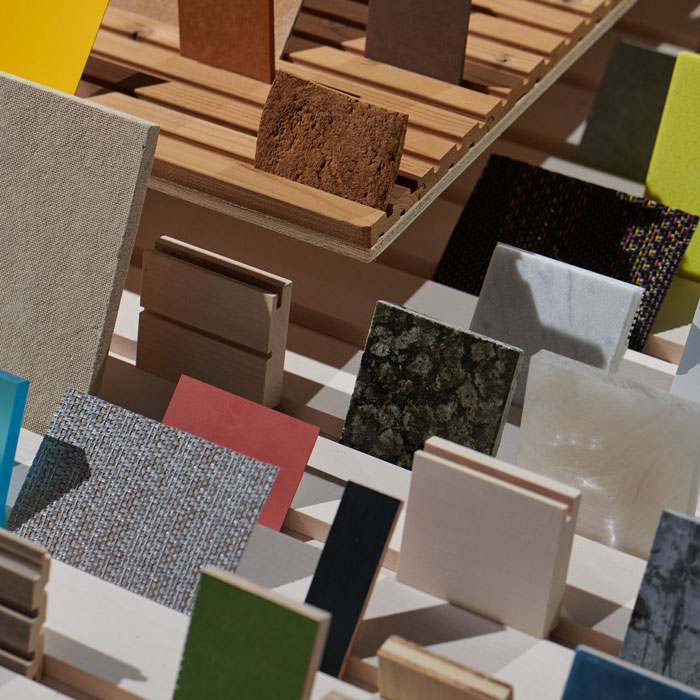
Habitarematerials
One prime example of this came via Habitarematerials, which in itself was a trade show within a trade show. Its sponsors Habitare are Helsinki’s answer to Milan, which takes place later in the autumn and bills itself as “Finland’s leading interior design, furniture and design event, which offers experiences and inspiration for decorating.” For its first-ever showing at the event NEMO Artcitects were drawn in to design the space, which incorporated 14 Finnish materials suppliers along with a host of manufacturers from around the globe. The emphasis was for visitors to come along and play by arranging the many beautiful samples on display, with the potential to consider material combinations that they may never have imagined before.
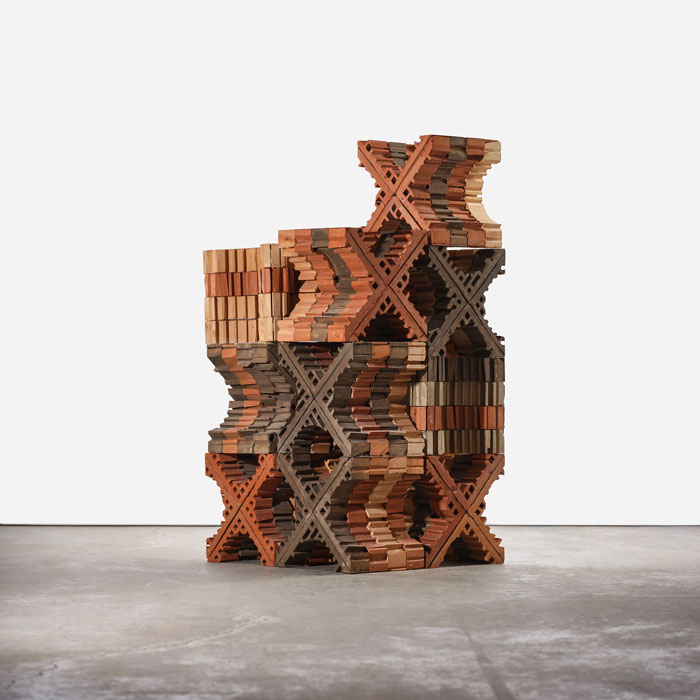
Aurélien Veyrat
Opening our imaginations to the less obvious potentials of materials was indeed an emphasis for many events taking place across the city, not least at Alcova, the decommissioned slaughterhouse that housed a range of experimental projects in all scales. Tellingly many designers showcasing in the area focused their attention on materials that come from the earth, with a fascination of fundamental substances coming to the fore. Having originally trained as a cabinet maker followed by a stint working with architect Jean Nouvel, Aurélien Veyrat has long merged disciplines within his practice. In more recent times this has seen him blend art with design and his showing Post was no exception.
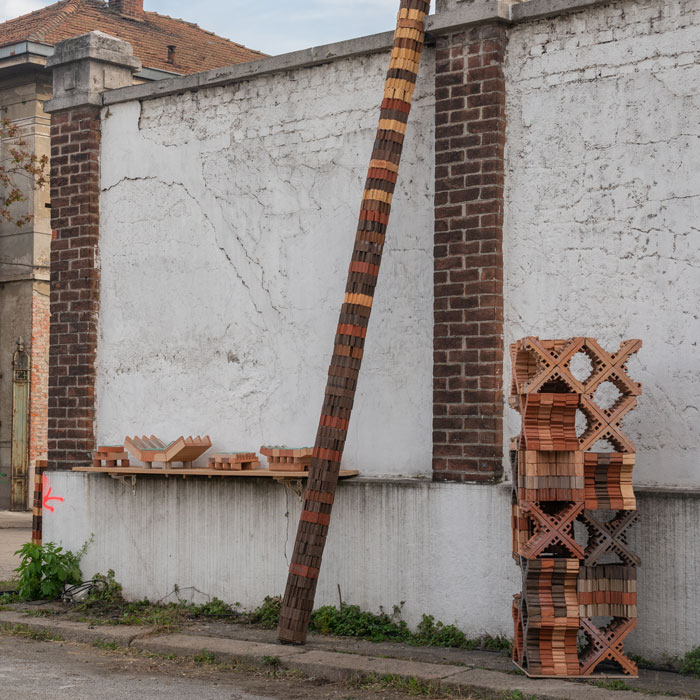
Aurélien Veyrat
Much like the work on show by Natural Material Studio over at Isola, his investigation began with an interest in the humble brick; a ubiquitous building block formed from the earth that is often overlooked. Pushing back against the capitalist emphasis on industrialised production for the sake of mass construction, his large sculptural pieces instead look to highlight and celebrate the rich variations in texture and colour available in bricks. The stacked earthenware forms, sometimes totemic in appearance, create subtle shifts in these qualities along with pattern, with some that invoke the look of delicate lace, thus emphasising the solid and hardwearing quality of bricks all the more.
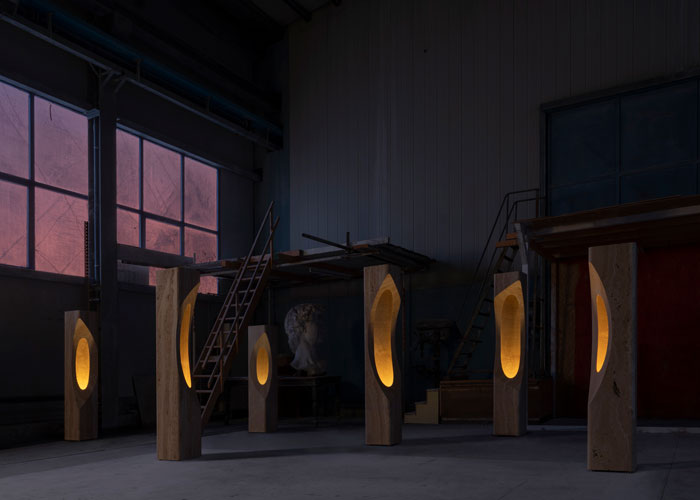
Cor Agglomerati, Tom Fereday. Photo Nicola Gnesi
Another rather poetic exploration of a material generated by the earth rather fittingly came via another meeting of art and construction, with Tom Fereday commissioned by London stone specialists Agglomerati to create an artistic take on the fundamental substance. By borrowing from the Latin word for “heart,” the collection’s title, Cor, alludes to the idea of the earth as a living organism with stone as the lifeblood, in this case, Italian Travertine. The 6 towering monolithic forms blur the boundaries between form and function, serving both as sculpture and lighting. Each draws attention to the unique qualities of the stone itself, with a mix of traditional stone carving and more contemporary internal coring techniques used to create the curved openings in which light is emitted from within. Every piece has been shaped in accordance with the existing patina of the pitted rock, with cuts made in alignment with the layered patterns made over millennia.
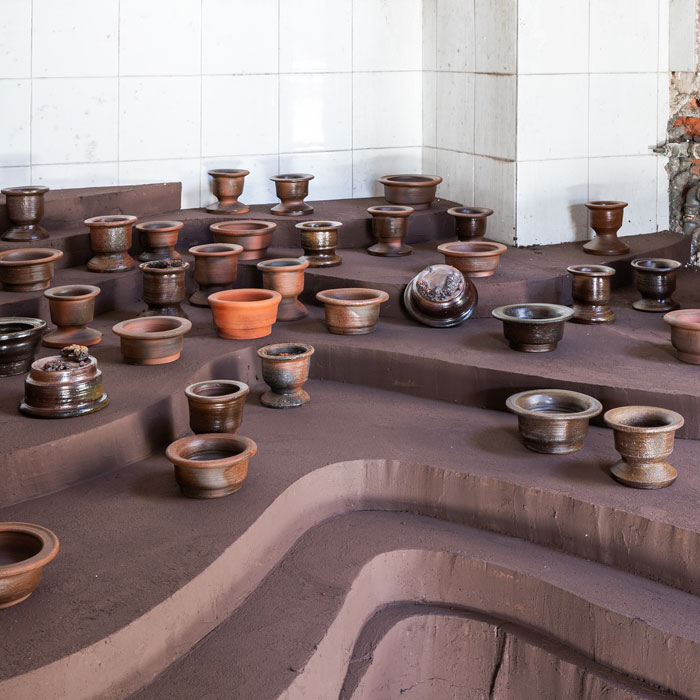
Hee Choi and Myung Nyun Kim, Ae Office
For designers, Hee Choi and Myung Nyun Kim, who operate under the banner Ae Office, connecting with a sense of place via the earth’s unique geology has a heightened significance. Travel and experience have played a big role in the studio’s development with the industrial design duo deliberately operating in a nomadic fashion until a recent settling in Berlin. Prior to this, they have explored many new environments and delved into the vernacular context of such sites in order to gain fresh perspectives and methodologies around materials and processes, of which Unearthed Island is a prime example. While beautiful in colour and form, the clay vessels displayed as the end product at the show hide a rich material narrative waiting to be revealed. The raw materials used to form the objects hark from Jeju, a unique island off the coast of South Korea where the team made their residence for 2 years of inquisitive research. The island itself is formed from volcanic rock and its topography comprises of lava stone and ash, making it a challenging place to live and work as the pair explain, “It has often been said the Jeju people were born out of stone and return to stone, the lava stones have been both a part of their lives and something to be overcome.” The resulting vessels and stools, which utilise the earthenware technique known as “Jeju Onggi,” look to highlight this plight as well as the ingenuity of those who endure the tough terrain.
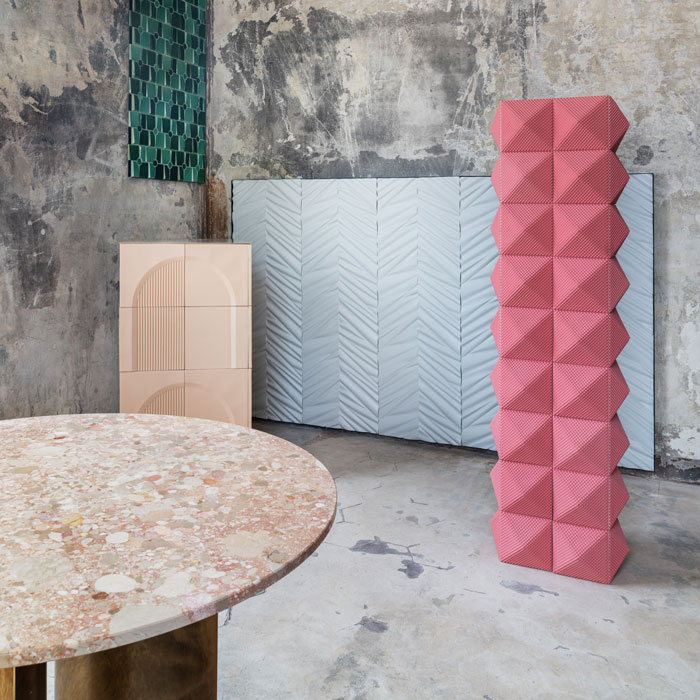
De Marchi Verona
Italian brand De Marchi Verona has made porcelain their specialist material since 2000 but the new collections on show at the event signify a new departure for their surfaces, which once again derive from the earth’s surface. A combination of fresh designer perspectives, manual processing and contemporary automated machinery has proven to be the fertile group from which to produce eye-catching 3-D surfaces that expand the company’s portfolio for a modern audience with an appreciation of traditional craft. Employing the services of Marta Martino, Giacomo Totti, Stefania Borriero and Hanen Trabelsi the new ranges include a sumptuous mix of pattern and texture that borrow from classic Italian design tradition and Veronese style from which the company was formed. Cross, designed by Marta Martino, takes the diamond ashlar found in Renaissance architecture and repeats its form to create a new expressive pattern, whilst Giacomo Totti’s Calipso is a tribute to the beauty of the mythological goddess of the sea, with echoing rippling waves and diagonal modules that enhance the surface’s texture.
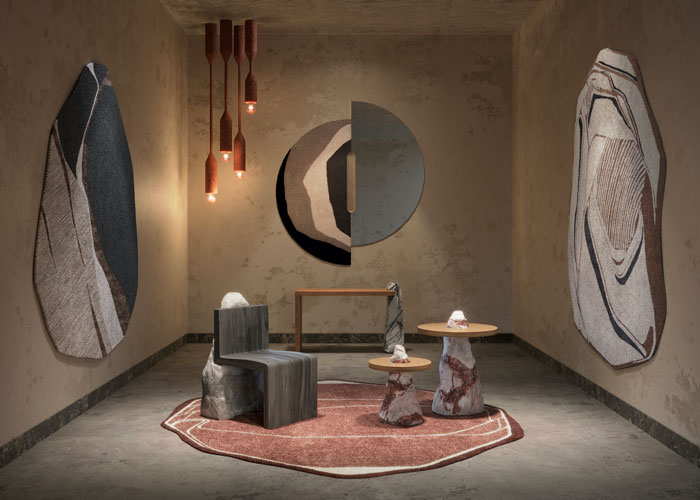
The Art of Formation




